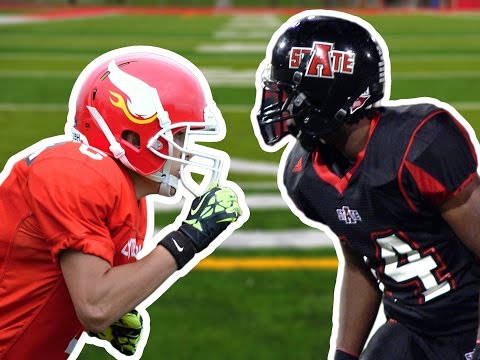What Does Redshirting Mean in Sports?
A redshirt in college athletics is when a student-athlete competes in their first year of eligibility. This allows them to have five years to complete four seasons of competition.
Checkout this video:
The Pros of Redshirting
Redshirting is the practice of holding a child back from starting kindergarten for a year in order to give them a competitive advantage. Redshirting can give children time to mature physically, socially, and emotionally. It can also give them a chance to catch up academically if they are behind their peers. Redshirting can have some drawbacks, but the pros usually outweigh the cons.
Gives players an extra year to develop physically
One of the main benefits of redshirting is that it gives young athletes an extra year to develop physically. This can be especially beneficial in sports like football and basketball, where size and strength can be major factors in success.
Another benefit of redshirting is that it allows athletes to get a feel for the college game without having to worry about the pressure of competing for a starting spot. This can help them adjust to the higher level of competition and make the transition to college athletics smoother.
Lastly, redshirting can give players an extra year to focus on their academics and make sure they are on track to graduate. In many cases, athletes who redshirt are able to take advantage of academic programs that help them catch up if they fall behind during their first year or two of college.
Gives players an extra year to develop emotionally
Many young athletes get discouraged when they don’t make varsity as freshmen or sophomore. Redshirting gives these players an extra year to develop their skills and improve their chances of making the varsity team. It also gives them an extra year to mature emotionally, which can be helpful in dealing with the pressures of being a student-athlete.
The Cons of Redshirting
Redshirting is when a college athlete sits out for a season to extend their eligibility. This gives them an extra year to compete. Theoretically, it sounds like a great idea. You get an extra year to train, an extra year to get bigger, faster, and stronger. However, there are some cons to redshirting that you should be aware of.
Redshirted players may be at a disadvantage when they do enter competition
Redshirted players may be at a disadvantage when they do enter competition. The extra year of development may create a physically stronger, faster and more experienced player, but the redshirt player will be playing against other athletes who have had that extra year of development. In some cases, the gap in experience and physical maturity may be too great for the redshirt player to overcome.
Redshirting can be expensive for programs
Redshirting can be expensive for programs because they have to keep an extra year of eligibility on their books. This can limit the number of scholarships a program can offer in a given year and can also cause problems with the NCAA’s 85-man roster limit.
The Bottom Line
Redshirting is the practice of holding a child back from starting kindergarten for a year in order to give that child a competitive advantage. The theory behind redshirting is that the child will be better prepared academically and will thus perform better in school and in sports. Redshirting can also give the child a physical advantage, as he or she will be bigger and stronger than the other children in the class.
Redshirting is a personal decision that should be made by the player and their family
Redshirting is a personal decision that should be made by the player and their family. If a player is good enough to play at the Division I level, they will have the opportunity to do so regardless of when they start their collegiate career. Playing time is not guaranteed, especially as a freshman.
Coaches often recruit players they project to be redshirts, meaning they will sit out their first year to develop physically and mentally without using up a year of eligibility. This allows the player to have five years to play four seasons.
Some player’s development may be hindered if they do not redshirt, depending on the strength and depth of the team. If a player wants to compete for starting position or significant playing time as a freshman, they may not want to redshirt.
Only the player can decide if sitting out a year is in their best interest.





